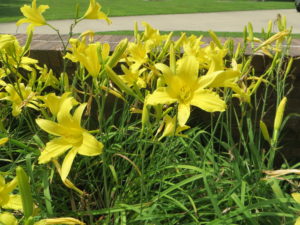Before purchasing and planting perennials, here are ten helpful tips to assist you in garden planning:
- Perennials die back to the ground in fall or winter and regrow from plant crowns or roots the following spring.
- Most perennials should be divided when they are dormant: Spring bloomers in the fall and Fall bloomers in the spring. Some (Shasta daisies, coneflowers, black eyed Susans) may need dividing every 3 years; hostas and daylilies every 5 years.
- Perennials from cool temperate regions must undergo a cold winter to encourage new buds to grow in spring. Examples: asters, irises, lupines, wallflowers, peonies, and primroses,
- Many perennials spread from underground roots (termed “rhizomatous”) which send up new stems in spring. Examples: bleeding heart, iris, coreopsis.
- Some perennials, such as lupines, columbines and delphiniums are short-lived, lasting only 2-3 years in zone 6 and south.
- Perennials are not totally maintenance-free. Some do clean up easier than others.
- Deadheading, the practice of removing the old spent flowers often results in additional flowering 4-5 weeks later. Examples include beebalm (Monarda), blanket flower (Gaillardia), speedwell (Veronica), yarrow (Achillea), Shasta daisies (Leucanthemum), and many more.
- Grand expectations: most perennials do not reach their full potential (size and flower numbers) until 3-4 years after planting. Many gardeners say “first they sleep, year 2 they creep, year three they leep”.
- Most perennials bloom in a specific timeline. Reblooming daylily and iris cultivars flower 2-3 weeks in summer and re-bloom again in fall (with extra care). Select lots of different kinds to lengthen the blooming cycle in your garden. Since perennial bloom is periodical, interplant with lots of colorful longer flowering annuals.
- Some perennial species may be invasive in your state. Check with your state’s Department of Agriculture or Natural Resources to find which plants are listed as invasive.


 Posted in
Posted in 
